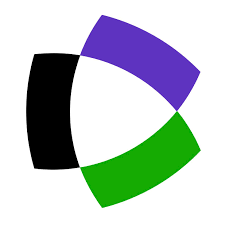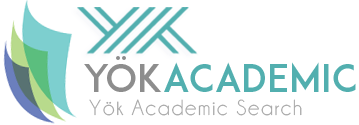Research Article
Issue Editorial Board

Aslan Gülcü 1963 yılında doğdu. İlk, orta ve lise eğitimini Erzurum/Oltu'da; lisans eğitimini 1985 yılında Atatürk Üniversitesi Fen Fakültesi Matematik bölümünde tamamladı. 1993 yılında Matematik (Analiz ve Fonksiyonlar teorisi alında) doktorasını verdi. 2008'de Yöneylem alanında doçentliğe, 2014 yılında da Bilgisayar ve Öğretim Teknolojileri Eğitimi (BÖTE) alanında profesörlüğe yükseltildi.
Bayburt Üniversitesinde Rektör Yardımcılığı ve Eğitim Fakültesi Dekanlığı, Atatürk Üniversite'nde Oltu Beşeri ve Sosyal Bilimler Fakültesi Dekanlığı ve ÖSYM Başkan yardımcılığı görevlerini yaptı.




 Web
Web
İngilizce

1992 yılında Cumhuriyet Üniversitesi Mühendislik Fakültesi Jeoloji Mühendisliği Bölümü’nde lisans eğitimine başladı ve 1996 yılında lisans eğitimini tamamladı. 1997-2000 yılları arasında Cumhuriyet Üniversitesi Fen Bilimleri Enstitüsü’nde Yüksek Lisans ve 2000-2005 yılları arasında yine Doktora yaptı.
1997’de C. Ü. Sivas M.Y.O. İnşaat Programı’nda Öğretim Görevlisi olarak göreve başladı ve 2007 yılında Balıkesir Üniversitesi Mühendislik-Mimarlık Fakültesi Jeoloji Bölümü’ne Yrd. Doç. Dr. olarak atandı. 2012 yılında Namık Kemal Üniversitesi ‘ne Yrd. Doç. Dr. Olarak ve 2018’de Doç. Dr. olarak atandı ve halen Çorlu Mühendislik Fakültesi Çevre Mühendisliği Bölümü’nde Doç. Dr. olarak görev yapmaktadır.


I enrolled in 2007 at the Yıldız Technical University Faculty of Naval Architecture and Marine Engineering, where I graduated in 2011. During my undergraduate studies, I attended the Department of Mechanical Engineering at the University of Applied Sciences Dusseldorf and the Department of Mechanical Engineering at Kiel University of Applied Sciences as a visiting student. I earned my master's degree in the same department in 2013. In August 2019, I completed my doctoral dissertation, titled "Performance and Size Moving Systems: Constructal Law," the same year I started it. Between January 2017 and April 2018, I was a visiting researcher at the Department of Mechanical Engineering and Materials Science (MEMS) at Duke University. After working as an R&D engineer at Istanbul Metro from 2011 to 2012, I began work as a research assistant at the Department of Naval Architecture and Marine Engineering at Yildiz Technical University. Since June 2020, I have worked as an assistant professor in the same department. Between August 2021 and August 2022, I was a visiting professor at Duke University. I am an associate professor since November 2023.
Aim & Scope
JOCTENSA, Journal of the Academy of Technology Science and Engineering aims to convey the latest developments in technology, engineering and natural sciences to scientists and readers. The journal focuses on its experimental and theoretical studies in these three main areas.
JOCTENSA is an international peer-reviewed journal that publishes original studies in the fields of Science, Technology and Engineering Sciences, develops the existing scientific literature and presents it to scientific circles, and as a respected scientific journal that includes research articles and work introductions written in Turkish, English and Arabic languages.
Author Guidelines
Page number should not be indicated in the works submitted. The length of the article should not exceed 7.000 (seven thousand) word limit including headings, abstract, keywords and English summary.
The works to be submitted should be prepared according to Article Template.
Heading
The first letter of each word should be capitalized, in line with the content of the article, and should be written in bold and 14 pt. Just below the English title, the Turkish title should be written in normal characters, 12 pt and italic.
Author name(s) and address(es)
Information regarding the author should not be included in the article. This information should be given under the relevant headings in the "Copyright Transfer Agreement and Ethical Statement Form" uploaded along with the article.
Abstract
At the beginning of the article, there should be an English summary ranging between minimum 150 and maximum 250 words, reflecting the essence of the research topic. Just below the abstract, keywords of at least 3 and at most 5 words that are directly related to the article should be provided. Under the keywords, there should be Turkish translations of the Abstract and keywords.
Section Headings
First Level Headings: 11 pt, Bold, First letter of each word capitalized, Automatic numbering should not be used, Spacing should be 12nk before, 6nk after. For first-level headings, the Heading 1 style in the Article Template can be used.
Second Level Headings: 10 pt, Bold, First letter of each word capitalized, Automatic numbering should not be used, Spacing should be 6nk before, 6nk after, it should be indented 0.5 cm Inside. For second-level headings, the Heading 2 style in the Article Template can be used.
Third Level Headings: 10 Pt. Bold, Italic, Only the first letter should be capitalized, Automatic numbering should not be used, Spacing should be 6pt before, 6nk after, followed by 0.5 cm indentation. For third-level headings, Heading 3 style in Article Template can be used.
Main Text
The main text should be in A4 size (16.5 x 24.7 cm), properly margined 2,5 cm from top, bottom, right, and left each, in MS Word program with Times New Roman font, 10 pt, using single line spacing. Paragraph spacing should be set as 6 pt before-after, paragraph indents should be 0.5 cm from the left. As the text alignment, full justification should be used. In cases where font use is required in the text, the font file should be sent, as well.
Table, Image, Graphics
The Author can use such materials as table, image, graphic etc. in the text in accordance with scientific criteria. The text and characters in the table should be written in 10 pt. (It can be written in 9 pt. when necessary). The photos used should have high resolution, and if they are not directly related to the text, they should be provided under the "APPENDIX" heading.
Author Contributions
Contributions of the author(s) during the research process should be expressed in the section specified in the Article Template.
Conflict of Interest
The conditions and relationships that may constitute a conflict of interest, if any, should be disclosed in the studies to be submitted for publication. If no conflict exists, the statement of "The Author(s) declare that there is no conflict of interest." must be added.
Funding
If a fund has been received for the study, the supporting organization and the project number should be specified. If no funding has been received, the statement of "No funding has been received." must be added.
Ethical Statement
If ethics committee approval is not required for the study, it should be stated in the study as “There is no requirement of Ethics Committee Approval for review articles.”. However, in the studies that require ethics committee approval, the author(s) should add information regarding the approval (name of the committee, date and number of the approval) both in the method section of the study and in the Ethical Statement section.
Notes
Additional information about the article (conference information, studies derived from thesis, etc.) should be stated in the notes section. This section may also include a statement of support or thanks.
Book with one author:
Sapolsky, R. M. (2017). Behave: The biology of humans at our best and worst. Penguin Books.
Book with two authors:
Svendsen, S. & Løber, L. (2020). The big picture/Academic writing: The one-hour guide. Penguin Books.
Book chapter:
Aron, L. (2019). Culinary arts: Talent and their development. RF Subotnik and FC Worrell (Eds.), Conceptualizations of giftedness and the development of talent (pp. 345-359). American Psychological Association.
Article with one author:
Karakaya, V. (2021). “On Modeling of the Mathematical Objects from the Philosophy of Mathematics", Beytulhikme An International Journal of Philosophy, 11 (3): 1143-1155.
Article with two authors:
Şimşek, N. & Karakaya, V., (2008). Structure and some geometric properties of generalized Cesaro sequence space”, International Journal of Contemp. Math. Sciences, 3(8), 389 –399.
Book with editor:
Kesharwani, P. (Ed.). (2020). Nanotechnology based approaches for tuberculosis treatment. Academic Press.
Translated Book:
Ersoy B. A. Vd. (2012). Thomas Calculus, (12. Ed). (George B. Thomas, Maurice D. Weir-Hass). Pearson Publishing.
Theses:
Kabir, J. M. (2016). Factors influencing customer satisfaction at a fast food hamburger chain: The relationship between customer satisfaction and customer loyalty (Doctoral dissertation, Wilmington University). UA Campus.
Citations within text:
Direct citations more than 40 words are provided as block quotations indenting it 2cm from the left margin and quotation marks are not used. When explanations are necessary, footnotes can be employed with automatic order number. The author(s) are not suggested to use footnotes unless it is unavoidable.
Example:
Vatan Karakaya (2021) states with regard to mathematical objects:
It has been accepted by most of the philosophers of mathematics that mathematical objects are abstract beings and closed to the five senses. However, although mathematical knowledge is closed to the senses as being an abstract entity, it is nevertheless so effective in the sensible world. (p. 14).
The citations less than 40 words are provided in quotes. Following the surname of author, publication date of the work should be given within parenthesis and page number should be placed within parenthesis at the end of the citation.
Example:
Vatan Karakaya (2021) claims that “mathematical knowledge is closed to the senses as being an abstract entity” (p. 14).
When paraphrasing is made, page number is not needed. Such citations can be displayed as paraphrased sentence (Surname, year) or Surname (year) paraphrased sentence.
For those not given here, see: https://apastyle.apa.org/products/publication-manual-7th-edition
Ethical Principles and Publication Policy
CİHANTEFMAD’ta yayımlanmak üzere gönderilen makalelerin özgün ve akademik etiğe uygun olması beklenir.
Yazarlar; intihal (plagiarism) başta olmak üzere çoklu yayın (duplication), uydurmacılık (fabrication), dilimleme (salamization), hediye yazarlık, hayalet yazarlık, kaynakların taraflı seçimi gibi akademik etik ihlallerinden uzak durmakla mükelleftirler. Yazarlar, makalelerinin intihalden arınık olduğunu iThenticate programı ile belgelemeli ve benzerlik raporunu makale başvurusunda dergiye göndermelidir. Benzerlik oranı %15 ve üzeri olan makaleler değerlendirmeye alınmayacaktır.
CİHANTEFMAD’a gönderilen çalışmaları destekleyen kuruluşların, finansal kaynakların Teşekkür kısmında beyan edilmesi şarttır. İnsanlarla yapılan sosyal deney ve anket uygulamalarında kişilerin rızası esastır. Rızanın alınamayacağı durumlarda ilgilinin bağlı olduğu kurum / kuruluşlardan etik beyan onayı almaları ve bunu çalışmalarıyla birlikte ibraz etmeleri gerekir.
Çalışmanın CİHANTEFMAD’a sunulmasıyla birlikte bir başka dergiye de gönderilmiş olması kabul edilemez.
Bir yazar CİHANTEFMAD’ta yayımlanmış makalesinde önemli bir hata veya yanlışlık olduğunu tespit ettiğinde, dergi editörünü bilgilendirmek ve makaleyi geri çekmek / düzeltmek için editörle işbirliği yapmakla mükelleftir.
CİHANTEFMAD’ta yayımlanan bilimsel çalışmaların yazarları; çalışmalarındaki bütün bilgileri etik davranış ve akademik kurallar çerçevesinde elde ettiklerini, kendilerine ait olmayan her türlü ifade, bilgi ve bulguların kaynaklarına eksiksiz atıfta bulunduklarını kabul etmiş sayılırlar. Akademik etik kurallarının göz ardı edilmesi sonucu ortaya çıkabilecek her türlü ihlalde, kanuni sorumluluk bütünüyle yazara aittir.
CİHANTEFMAD; editörleri, kurul üyeleri, hakemleri ve yazarlarının her türlü akademik faaliyetlerinde COPE (Committee on Publication Ethics / Yayın Etiği Komitesi) tarafından belirlenen ölçütlerin esas alınmasını tavsiye etmektedir. (bkz. https://publicationethics.org/)
Price Policy
Makalelerin değerlendirme süreçlerinde CİHANTEFMAD yazarlardan ücret almaz ve yazarlara telif ücreti ödemez.



